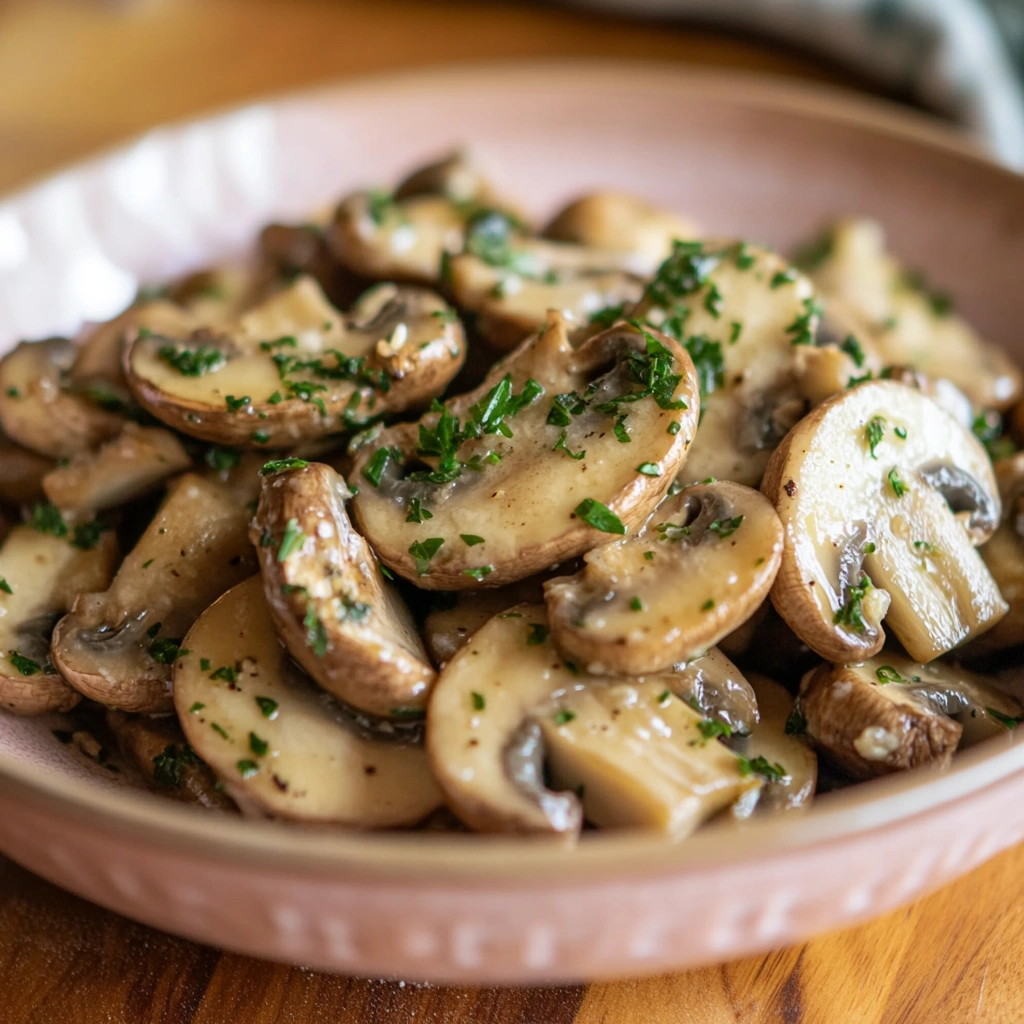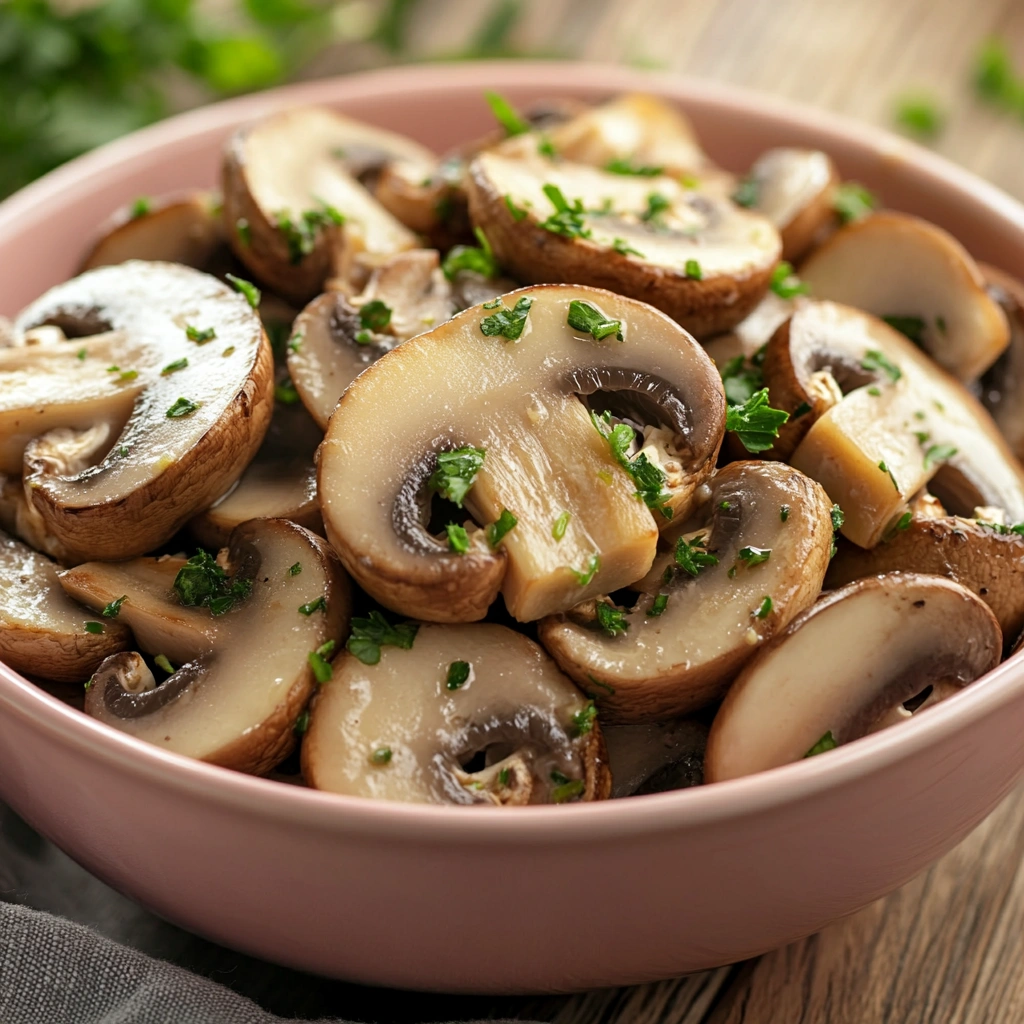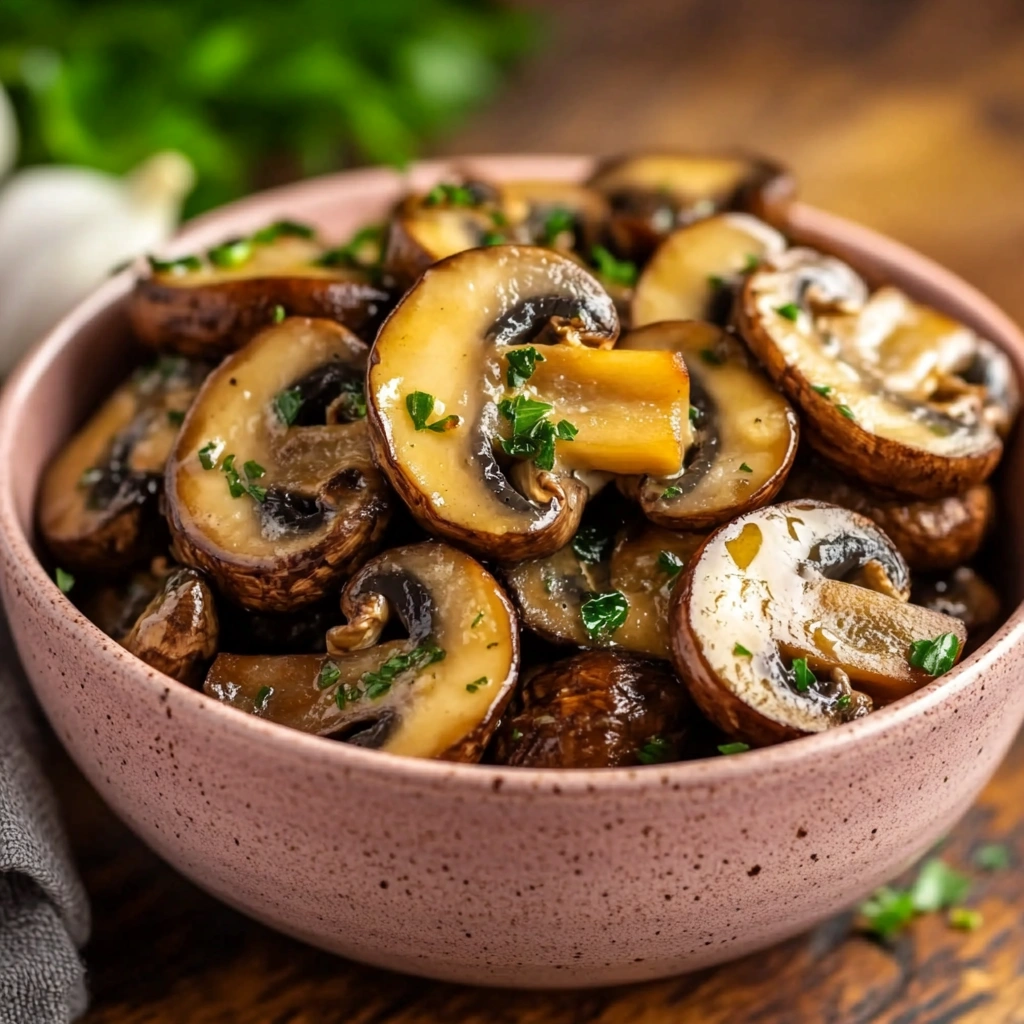Introduction
Baby Bella Mushrooms are some of the most popular and versatile fungi in the world. Known for their rich, earthy flavor and firm texture, they are loved by home cooks and chefs alike. These mushrooms offer many health benefits and can be used in a wide range of dishes. Therefore, understanding their different aspects can enhance your culinary skills. In this guide, we’ll cover everything you need to know about them. From their varieties and history to their nutritional benefits, you’ll discover why these mushrooms are a must-have in your kitchen.
If you’re looking for comfort food ideas, you might also want to check out this guide on the Best Corn Casserole Recipe. It pairs wonderfully with sautéed baby bellas.
What are Baby Bella Mushrooms?
Baby bella mushrooms (Agaricus bisporus) are a mid-stage version of the common white button mushroom and the mature portobello mushroom. Because of their brown color, firm texture, and deeper flavor, they are perfect for many recipes. Consequently, they are ideal for soups, stews, and pasta dishes.
If you enjoy dishes with bold flavors, you should try using them in a recipe like Panda Express Hot Orange Chicken. Not only do the mushrooms add a delicious umami taste, but they also enhance the overall dish.
Variety and Nomenclature of Baby Bella Mushrooms
People often call baby bella mushrooms by different names. For example, some refer to them as:
- Cremini Mushrooms: A common name, especially in Italian recipes.
- Brown Mushrooms: Named for their distinctive color.
- Italian Mushrooms: Reflecting their frequent use in Mediterranean cooking.
Although these mushrooms have different names, they are all the same species. However, the difference comes down to how long they are allowed to grow. As a result, you get a mushroom with a richer taste compared to white buttons, yet a softer texture than portobellos.
Baby Bella Mushrooms vs. White Button and Portobello Mushrooms
To choose the best mushroom for your dish, it helps to know the stages of growth. Here’s a quick breakdown of each type:
White Button Mushrooms:
- These are the youngest mushrooms.
- They have a mild flavor and soft texture.
- Therefore, they are perfect for salads, pizzas, or raw dishes.
Baby Bella Mushrooms (Cremini):
- These are more mature than white buttons.
- They have a firmer texture and a deeper, earthier flavor.
- Consequently, they are great for soups, stews, and pasta.
Portobello Mushrooms:
- These are the fully grown versions.
- They are large, meaty, and perfect for grilling or stuffing.
Tip: Use baby bella mushrooms when you want a balance of tenderness and flavor. Moreover, they are a fantastic option for boosting umami in various recipes. For even more ideas, you might explore this Healthy Chicken Apple Sausage recipe, which pairs beautifully with mushrooms.
Why Choose Baby Bellas?
In summary, baby bella mushrooms offer a perfect middle ground between white button mushrooms and portobellos. Because of this, they are incredibly versatile in the kitchen. Whether you are making soups, stews, pasta, or casseroles, these mushrooms will provide the right balance of texture and flavor. Additionally, their nutritional benefits make them a healthy choice for any meal.
Therefore, the next time you’re at the grocery store, consider adding baby bella mushrooms to your shopping cart. Not only will they elevate your dishes, but they will also contribute to a healthier lifestyle.
The History of Baby Bellas

The Origins of Baby Bellas
Baby bella mushrooms have an interesting history. In the 1920s, a Pennsylvania farmer named Louis Ferdinand Lambert noticed a change in his crop of white button mushrooms. Specifically, this change produced a mushroom with a darker color and firmer texture. As time went on, people began to appreciate these unique qualities. Eventually, they started calling these mushrooms baby bella mushrooms, which transformed the mushroom farming industry.
Louis Ferdinand Lambert’s Contribution
Lambert didn’t stop with his discovery. In fact, he developed new methods to grow mushrooms on a large scale. As a result, his innovations revolutionized the mushroom industry. Consequently, farmers in Pennsylvania, particularly in the town of Kennett Square, earned the nickname “Mushroom Capital of the World.”
Today, this region produces over half of the mushrooms in the United States. Thanks to Lambert’s efforts, mushroom farming continues to thrive and evolve. Now, consumers can easily find baby bella mushrooms in grocery stores across the country.
Cultural Significance of Baby Bellas
Although people do not classify baby bella mushrooms as medicinal, these mushrooms still play a role in traditional practices.
- In Traditional Chinese Medicine (TCM): Practitioners believe that mushrooms, including baby bella mushrooms, support overall health and boost energy levels. As a result, they often include these mushrooms in tonics and soups designed to improve well-being.
- In Modern Nutrition: Many people eat baby bella mushrooms for their antioxidants and nutrient content. Moreover, nutritionists recognize their potential to promote overall health and vitality.
For those looking to add nutritious options to their meals, try this recipe for Healthy Chicken Apple Sausage. Not only does it provide a delicious meal, but it also offers a good source of protein that pairs perfectly with sautéed baby bella mushrooms.
Nutritional Benefits of Baby Bella Mushrooms
Key Vitamins and Minerals in Baby Bellas
Baby bella mushrooms are full of important nutrients. In particular, they provide several key vitamins and minerals. As a result, adding these mushrooms to your diet can help you stay healthy.
Vitamins:
- Vitamin D: Keeps your bones strong and helps your immune system fight illness.
- B Vitamins: Give you energy and support brain function.
Minerals:
- Potassium: Helps control your blood pressure.
- Calcium: Strengthens your bones and teeth.
- Selenium: Functions as an antioxidant, helping to safeguard your cells.
- Magnesium: Helps your muscles and nerves work properly.
Dietary Advantages of Baby Bellas
In addition to vitamins and minerals, baby bella mushrooms offer other health benefits. These make them a smart choice for many diets.
Low in Carbs and Calories:
- Calories: Just 19 calories per 100 grams.
- Carbs: Only 2.3 grams of carbs per 100 grams.
Because of this, they are great for low-carb and low-calorie diets.
Rich in Fiber and Protein:
- Fiber: Helps your digestion and keeps your gut healthy.
- Protein: Contains 2.5 grams of protein per 100 grams, making them a good choice for people who need more protein.
Health Benefits of Baby Bellas
Baby bella mushrooms are not just tasty – they are also good for your health. Here are some of the main benefits:
Immune System Support:
Thanks to antioxidants like ergothioneine and glutathione, these mushrooms help boost your immune system. As a result, they protect your body from damage and help you fight off infections.
Heart Health:
- Potassium: Helps keep your blood pressure in check.
- Fiber: Helps lower cholesterol and supports a healthy heart.
Eating baby bella mushrooms regularly can help your heart stay strong.
Anti-Inflammatory Properties:
The nutrients in baby bella mushrooms help reduce inflammation. This is especially helpful if you have joint pain or conditions like arthritis. In addition, these anti-inflammatory benefits can improve your overall health.
Why You Should Add Baby Bella Mushrooms to Your Diet
In summary, baby bella mushrooms are full of nutrients and offer many health benefits. Whether you want to boost your immune system, support your heart, or reduce inflammation, these mushrooms are a great choice.
For meal ideas, try pairing baby bella mushrooms with this recipe for Healthy Chicken Apple Sausage. Not only is it delicious, but it also makes for a balanced and healthy meal.
How to Source Baby Bella Mushrooms

Grocery Store Availability of Baby Bellas
One of the easiest ways to get baby bella mushrooms is by visiting your local grocery store. Since these mushrooms are both popular and versatile, most stores keep them in stock. You’ll usually find them in the fresh produce section, either packed in containers or sold loose by weight.
When shopping for baby bella mushrooms, follow these simple tips:
- First, choose mushrooms that have a firm texture.
- Next, look for a rich brown color. Stay away from any unusual discoloration.
- Finally, check that the surface is dry or just slightly damp. Too much moisture can lead to quick spoilage.
Additionally, many stores offer organic baby bella mushrooms, which are grown without synthetic chemicals. If you want to be more eco-friendly, look for labels that say “locally grown” or “sustainably grown.” This helps support local farmers and reduces environmental impact.
Growing Your Own Baby Bellas: Tips and Benefits
Growing baby bella mushrooms at home is easier than you might expect. Plus, it comes with several benefits that make it worthwhile:
- Freshness: You can pick the mushrooms right when you need them.
- Eco-Friendly: Growing your own reduces waste from packaging and transportation.
- Cost-Effective: A mushroom-growing kit is a small investment that can give you several harvests.
Follow these easy steps to grow baby bella mushrooms at home:
- Get a Mushroom Growing Kit: These kits come with everything you need, including soil mixed with mushroom spores.
- Set Up in a Cool, Dark Spot: Mushrooms grow best in temperatures between 55°F and 60°F.
- Keep the Soil Moist: Mist the soil regularly to keep it damp, but avoid overwatering.
- Harvest in 2-3 Weeks: When the mushrooms are ready, gently twist them to pull them out.
For recipe inspiration using your homegrown mushrooms, visit Prime Tasty’s Recipe Collection.
Foraging and Wildcrafting Baby Bellas Safely
If you love spending time outdoors, foraging for baby bella mushrooms can be a fun and rewarding hobby. However, it’s important to prioritize safety and know what you’re doing.
Keep these safety tips in mind:
- First and foremost, make sure you can correctly identify baby bella mushrooms. Some wild mushrooms look similar but are poisonous.
- Next, use a reliable mushroom guide or app to confirm your findings.
- Additionally, avoid picking mushrooms near roads, factories, or other polluted areas.
Differences Between Foraging and Wildcrafting
While both foraging and wildcrafting involve gathering plants or fungi, there are some key differences:
- Foraging usually means collecting food like mushrooms, berries, or herbs from nature.
- Wildcrafting, on the other hand, focuses on gathering plants or fungi for medicinal or healing purposes. It also emphasizes collecting responsibly to protect the environment.
Safety Precautions and Ethical Considerations
When foraging or wildcrafting, it’s crucial to be responsible and respectful of nature. Here are a few guidelines to follow:
- Take Only What You Need: Leave enough behind for animals and to allow the mushrooms to regrow.
- Check Local Rules: Some areas require permits for foraging, so make sure you’re aware of the regulations.
- Use the Right Tools: Carry a basket or mesh bag to hold your mushrooms. This allows spores to fall and spread as you walk, helping more mushrooms grow in the future.
By following these tips, you can enjoy the benefits of wild mushrooms while also protecting nature for future generations.


1 thought on “Baby Bella Mushrooms: A Complete Guide”